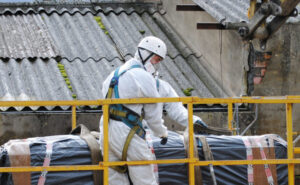Renovation, remodeling, restoration, and refurbishment may seem synonymous, but they’re not. Each one has its own goals, requirements, and processes. Visit Brick Fences Perth for more information.
Choosing the right upgrades is essential to boosting your property value. However, some renovation projects can deter buyers, so you must be careful.

Setting a budget before beginning work is important for planning a renovation. This will help you stay within your spending limits, and it will give you a clear idea of what the final cost will be. It’s also a good idea to leave room in your budget for unexpected expenses. This will save you from making last-minute decisions that could push the project over budget.
The amount you spend on a renovation will vary depending on the complexity of your project and the size of your home. For example, a basement renovation will be more expensive than a kitchen renovation. The cost of materials also plays a role in the overall price. For example, choosing cheap flooring options may cost you more in the long run because they are prone to damage and require regular replacement. Similarly, premium materials may be more costly upfront but will last longer and provide a better look than lower-end alternatives.
In addition to the cost of materials, you should factor in the cost of labor. While you can do some of the work yourself, hiring professional contractors for the more complicated projects is generally a good idea. This will ensure that the work is done correctly and by local codes.
You’ll need to find somewhere else to live during the construction process. This is because the construction can disrupt your daily routine. For instance, there will be times when the electricity or water is turned off and on, and noise levels may be high. In addition, some renovations make living in your home difficult or even impossible.
When renovating, planning the work, gathering the right materials, and starting the project takes a while. The timeframe can vary depending on the size of the renovation, the type of materials used, and the complexity of the design. Often, renovations that involve structural changes take longer to complete than those that don’t.
Another factor to consider is the time to obtain a building permit. This can add significant time to the renovation timeline, especially for large projects. Building permits typically take a few days to a few months to process. This delay is often because local authorities must review applications and ensure the work complies with laws and safety regulations.
It is also important to remember that renovating is a long-term process. Renovating aims to increase a property’s value, improve its functionality, and enhance its aesthetics. It can also be a way to make repairs and improvements that aren’t possible or economical.
The length of a renovation project depends on the scope of the work, the number and type of contractors involved, and the materials needed. It generally takes 6-8 months to renovate a home. However, the timeframe can be shortened or extended by weather conditions. Additionally, it can be impacted by the time it takes to receive products and materials from overseas.
The best way to estimate the duration of a home renovation is to look at the previous renovation projects completed by your contractor or architect. This will help you determine how much time to budget for the project. You should also factor in warranties and defects liability periods.
A permit is a legal document that permits you to complete a renovation project. It ensures the work is done properly and complies with building codes and regulations. It also helps to keep your home safe. If you fail to get a permit, you could be fined or forced to do the work again.
If you are still determining whether you need a permit, it is best to talk to your local code official before beginning the work. They can give you advice and help you avoid costly mistakes. Moreover, they can help you plan your renovation to comply with the required code requirements.
Many projects require a permit, including installing new flooring or painting interiors. However, some, such as cosmetic or surface upgrades, don’t need a permit. These include paint, wallpaper, and floor resurfacing. Other examples of projects that don’t require a permit include changing the location of the bathroom or replacing plumbing fixtures.
For projects requiring a permit, you must submit drawings or specifications of the proposed work to the Department of Buildings (DOB). The DOB may review the documents and issue a conditional or final approval. This process can take up to a month, so submitting your documents promptly is important.
You can hire a professional architect or engineer to prepare your plans to save time. This will reduce the amount of time it takes to get the permit. The city also allows professionals to sign off on their plans for common home renovations (but not in landmarked buildings or when applying for a new certificate of occupancy). This process, known as self-certification, speeds up the permitting process by eliminating the need for the city to review the documents.
Homeowners often must update their home insurance coverage when they embark on renovation projects. This may cause a premium increase or decrease, depending on the type and value of the renovation. Homeowners must notify their insurance company before starting renovations so that the insurer can use its valuation tool to recalculate the cost of replacing or repairing a house and to verify whether existing coverage is adequate.
Adding a room, removing a wall, or upgrading from builder-grade materials to high-end ones could all affect the replacement cost of your home. This change can trigger a change in your policy’s dwelling coverage limit, determining how much of your home is covered under your policy. This may lead to an underinsurance issue in the case of a major disaster.
It’s also good for homeowners to confirm that any contractors they hire have the proper insurance coverage. This includes personal liability and workers’ compensation, which protects homeowners if a contractor becomes injured while working on their home.
If a contractor fails to carry the appropriate insurance, homeowners can often file claims against them through their homeowner’s insurance policies. However, if the damage is caused by poor artistry, homeowners usually need to approach the contractor directly and hope they will resolve the matter.
If your renovation will make your house temporarily uninhabitable, consider purchasing a temporary policy or adding an endorsement to your current homeowners insurance policy that covers dwelling under construction. This special policy will give you additional protection while you’re renovating and can help cover the costs of staying elsewhere if something goes wrong during your project.
Home renovation projects are an excellent way to increase a home’s value and make it more attractive. The renovation can involve various things, from painting the exterior to replacing outdated lighting. Regardless of the project’s scope, it is important to hire a reputable contractor to ensure the work is done correctly.
A reputable contractor will have extensive experience in construction and will be able to handle the specialized aspects of a renovation project. They can also coordinate with other parties, such as the architect or designer. They will also be able to obtain the necessary permits and ensure that the renovation is completed on time.
Getting referrals from friends and family before hiring someone for a home renovation is a good idea. It’s also a good idea to ask the contractor about problems they encountered during previous renovations. The answers to these questions will help you determine whether they do business correctly.
In addition to the general contractor, a renovation will require a team of professionals such as architects, engineers, and plumbers. These professionals may charge hourly or fixed fees for their services. They should be licensed and insured and provide a written estimate of the cost of their services.
A good renovation contractor will be able to provide you with an accurate quote for the project. Be sure to get quotes from several contractors and compare them carefully. Ask each contractor about their work methods, building materials, and timelines. Then, compare the prices to find the best deal. It would be best to look for a contractor that offers a warranty.
